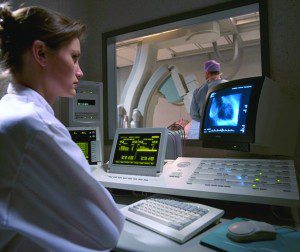

Medical technology advancements have saved many lives. They not only do so with treatments, but also by detecting diseases early enough to prevent spreading. Diagnostic Imaging gets a significant amount of the credit. Jonathan Lewin, Chairman of John Hopkins School of Medicine’s Radiology Department agrees. He praises, “Advances in imaging over the last five years have revolutionized almost every aspect of medicine.”
MRI, Ultrasounds, CT, and PET Scans have made huge impacts on the diagnosis and treatment of diseases. We might have heard of the words, but do we really know what they are?
MRI stands for Magnetic Resonance Imaging. This gives physicians a way to look inside your body without the use of X-rays. A combination of a large magnet and radio frequency waves are used to do so. An MRI exam is painless and takes between 30 to 60 minutes. This imaging advancement helps physicians see certain types of tissue in your body. As well, it can discover very important information about your brain, spine, joints, and internal organs. These benefits help detect early signs of disease and injuries. With this material, physicians can help determine the best suitable treatments. The Breast MRI in particular has become very popular. It surpasses mammography in detecting breast cancer in women with a family history of the disease. Keep this in mind during Breast Cancer Awareness month in October.
Ultrasounds are also known as sonography. The diagnostic imaging test uses high frequency sound waves to produce images of the soft tissue structure inside your body. This allows the computer in the ultrasound machine to produce an image. Ionizing radiation (x-ray) is not used to perform ultrasound imaging, making it ideal for pregnancies and guiding needle placement for biopsies. Naples Diagnostic Imaging Center also performs Breast Ultrasounds, Vascular Ultrasounds, and Echocardiograms. Thus, eliminating the assumption ultrasounds are only used for pregnant woman.
CT Scans, also commonly called CAT Scans, can detect many conditions that do not show up on a traditional x-ray. CT is a special imaging modality. It uses computers and x-rays to obtain cross-sectional images of our bodies. Every image is obtained by an x-ray tube that rotates around the patient. A Radiologist, who is trained to perform the procedure, can see every individual image and get a clear view of all the parts on your body.
PET, or Positron Emission Tomography, Scans use a small amount of radioactive substance to look for disease in the body. The substance is often called a tracer. The tracer travels through your blood and collects in organs and tissues, providing a Radiologist a clearer view. These scans not only help diagnose health conditions, but help find out how existing conditions develop. You may be wondering, “What about the radiation?”
Well, radiation is a part of our everyday environment. You were probably unaware that you receive 3 mSv of radiation each year, just from typical day-to-day activities. If you do not understand what 3 mSv means, that is okay. This can be broken down for you in simpler terms. You, and every other average individual, already have a 30-40% risk of developing cancer in your lifetime.
Receiving 1000 mSv would increase this risk by 4%. Keep in mind; you already get an average of 3 mSv yearly. And PET Scans and CT Scans use around the same amount of radiation. Statistically proven, to gain a 4% risk of cancer you would have to receive 140 chest CT scans.
Naples Diagnostic Imaging Center performs all of these technology advancements. Celebrating their 25th year, they were Naples first medical diagnostic facility. They have received “Facility Gold Seal” accreditations from the American College of Radiology for all MRI, Ultrasound, CT, and PET Scans. For scheduling call (239) 593-4222. Naples Diagnostic Imaging Center has 17 well qualified, respected, and devoted Radiologists on staff.
By 2020, heart disease has been estimated to be the leading cause of death throughout the world. If you are concerned that you may be at risk, take advantage of Calcium Scoring to help determine the health of your heart. You can contact Naples Diagnostic Imaging Center at (239) 593-4222 or visit them at 40 S Heathwood Dr on Marco Island.
Pam Caslowitz, MD
B.A., Brown University-1983
M.D., Johns Hopkins
University School of
Medicine-1987
Certified-American Board of
Radiology-1993
Residency-Diagnostic Radiology, Tufts, New England
Medical Center, Boston, MA-1989-1993
Clinical Fellowship- Johns Hopkins 1988-1989
MRI Fellowship-Mass General 1993-1994
Areas of Special Interest-MRI and Body Imaging
 Southwest Florida's Health and Wellness Magazine Health and Wellness Articles
Southwest Florida's Health and Wellness Magazine Health and Wellness Articles
